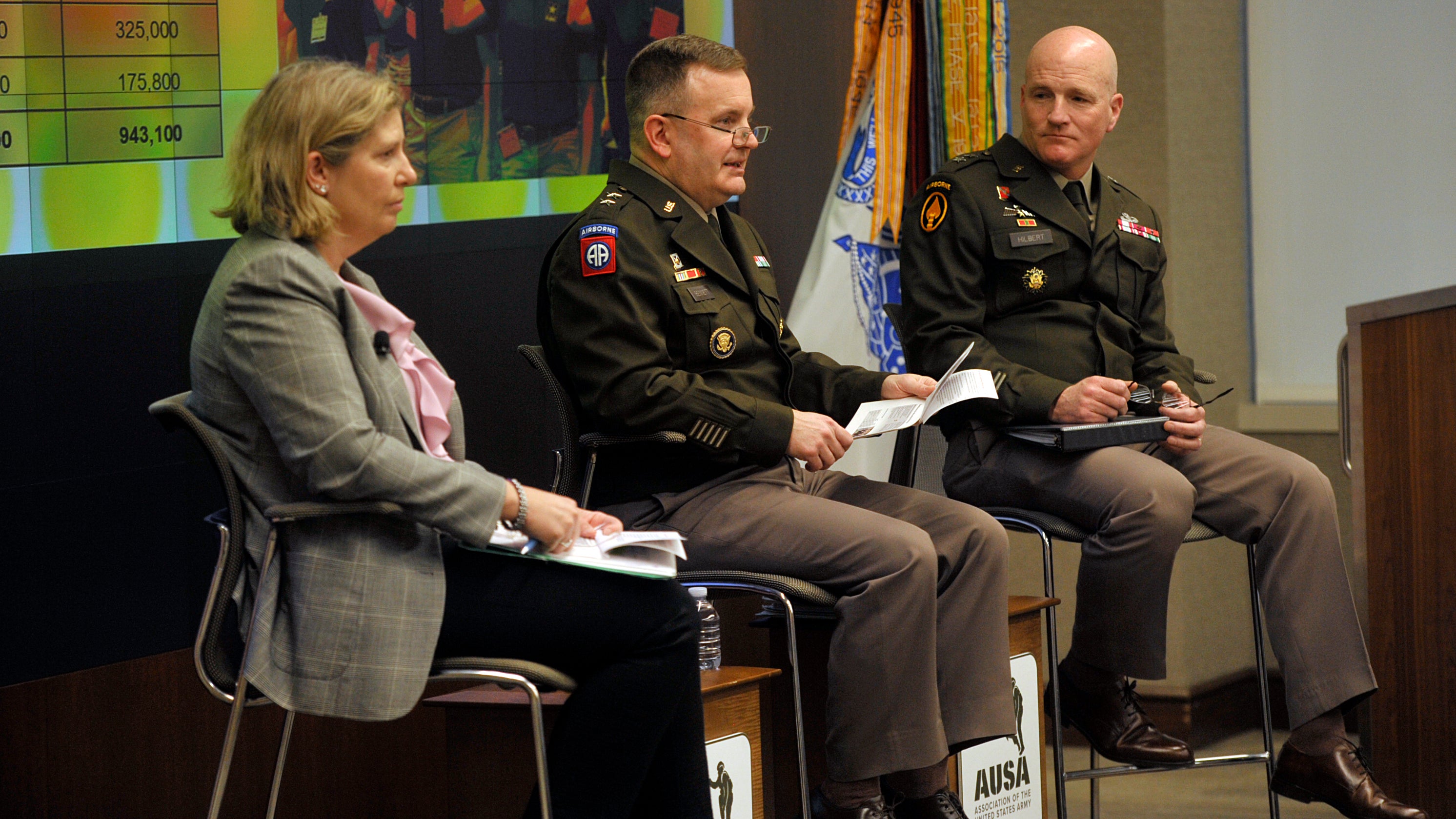Army Seeks ‘Urgent Action’ to Fund Global Missions
Army Seeks ‘Urgent Action’ to Fund Global Missions

As the Army rolls out its budget request for fiscal year 2025, the service urgently still needs funding for the current fiscal year, a panel of senior Army leaders said.
More than five months into fiscal 2024, which began Oct. 1, the Army continues to operate under a continuing resolution, stopgap funding that keeps spending at the previous year’s levels and prohibits new starts. The current measure expires March 22.
The Army also continues to support operations in Ukraine—almost $500 million this fiscal year—and provide an enhanced presence in the Middle East, said Maj. Gen. Mark Bennett, director of the Army budget.
The Army is requesting “urgent action” on both base funding for fiscal 2024 and the supplemental spending bill, Bennett said March 18 during an Association of the U.S. Army Coffee Series breakfast.
The $95 billion supplemental spending bill, which is still pending on Congress, includes about $60 billion in military aid for Ukraine as well as aid for Israel and Taiwan, the Associated Press reported.
Without the supplemental funds, the Army has been pulling money from other accounts to pay for its obligations to support Ukraine and the Middle East, according to Army budget documents.
“The strains on the Army are significant with the cash flow issue,” Bennett said. “We’re still looking forward to the urgent passage of that supplemental. The bills are significant there.”
Looking to fiscal 2025, the Army continues to balance efforts to transform the force and maintain readiness for today’s missions while dealing with flat budgets, Bennett said. With a “flat topline,” the challenge is “making it all fit in,” he said.
For fiscal 2025, the Army is requesting $185.9 billion, a 0.2% increase from its fiscal 2024 request. It includes a 4.5% pay increase for troops and a 2% raise for civilian personnel.
The request complies with the Fiscal Responsibility Act of 2023, which was approved by Congress in the debt limit deal last year and limits fiscal 2024 spending to the president’s budget request and provides for a 1% increase in fiscal 2025, according to CQ News.
As a result, “we really do have negative real growth” in the budget, said Bennett, who spoke at AUSA alongside Kirsten Taylor, deputy assistant Army secretary for plans, programs and resources in the office of the assistant Army secretary for acquisition, logistics and technology; and Maj. Gen. Joseph Hilbert, director of force development in the office of the deputy Army chief of staff for resources and plans, G-8.
To offset the constrained budget, the Army has prioritized areas such as recruiting and retention efforts, modernization programs, barracks and housing improvements, quality-of-life initiatives and readiness.
The request also projects an active Army troop strength of 442,300, down from the 452,000 requested in fiscal 2024 and the 445,000 that was eventually authorized.
It also projects an Army National Guard strength of 325,000 and an Army Reserve strength of 175,800 in fiscal 2025, for a total force of 943,100, down from the 951,800 that was projected in fiscal 2024.
“If fully funded, the [fiscal] ’25 budget will provide the Army what it needs to do what the nation asks it to do while taking care of soldiers and their families,” Bennett said.

